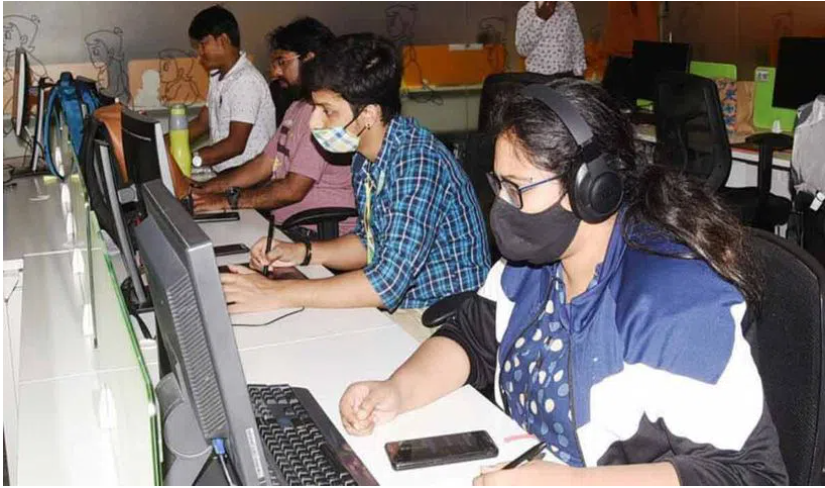IT industry wants more employees to work from campuses

Hyderabad: Many IT companies have started feeling that productivity is getting affected due to employees continuing to work from home (WFH).
Reasons? A bulk of the old staff have exited. New teams that have replaced them have not spent enough time with the office to understand the work culture and deliverables. Knowledge transfer is also slow due to distance barriers.
Earlier, many firms reported an increased productivity due to WFH. Many staff members then had a connect with respective teams. The added flexibility of working from home goaded them to give their best. But things have changed since due to great resignation, also referred to as great attrition, where employees left organisations in hordes. As a result, new teams have come in their place.
“When WFH was implemented two years ago, companies did not face much problem as they had a workforce that knew the project requirements and delivered accordingly while working from a remote location. Now, WFH is not helping the companies as new teams have come following the great attrition wave,” said Manisha Saboo, President, Hyderabad Software Enterprises Association, the IT industry body.
IT/ITES in Telangana employs about 7.8 lakh people directly. More than 1.53 lakh jobs were added in 2021-22. The employment number was 6,28,615 in 2020-21. Sector exports stood at Rs 1,83,569 cr for 2021-22 and Rs 1,45,522 cr for 2020-21.
“About 40-70% of the workforce is new. They are not yet familiar with new work, teams, client requirements and related aspects in the companies. Many of the new joinees have not been to current employer premises before,” said Saboo explaining the difficulty in managing the new teams.
“We do not expect everybody to work from offices like they did pre-Covid. But we would love to see more employees on the campuses at least a few times every week. Companies are treading cautiously so as to not trigger another attrition cycle by insisting on full attendance at campuses,” she explained.
Attrition is now between 15- 22% in the IT sector and 30-50% for the BPO segment. The great resignation wave increased it but now it is trending downwards as employees are settling down in new roles. On reasons for high attrition, Saboo said many companies have grown significantly in the last two years but are facing a shortage of talented manpower. “Many companies had to hire at a higher price. Some employees even got offers that were 80-140% higher than their current package,” she said about the recent workforce trends.
Companies have discontinued support facilities like daycare. Only remote working allows one to work as well as take care of children in the absence of such a facility now. Transport is also made one-way for women only who logout after 8 pm. Hassles of travelling on one”s own is also a factor for opting to WFH, said an IT employee. Some companies earlier deployed their own fleet for mass transport. But the same is not viable now due to the lower number of employees coming to office.
“Employees do not have proper infrastructure to work from home effectively. This is resulting in less productivity and poor quality of service to clients. Also, WFH is reducing the bond an employee has with the company and colleagues. This is encouraging many to look for better opportunities, which is resulting in attrition,” pointed out Oruganti Venkat, Lasya Infotech Managing Director and Kompally IT Entrepreneurs Association President.
Engaging employees in the office a few days in a week will help create a sense of belonging, improve productivity, and build a cohesive environment for the client-facing teams, according to Sailaja Garimella, Director of HR, Admin and Facilities, PacteraEDGE. Her company is encouraging employees to come to campus at least three times a week. The current occupancy is 50% and is hoping to increase it to 75% this year end. The flexi-working model has reduced attrition rate, she said..
“Great resignation trend is slowing down. It is all going to be a hybrid model, a win-win situation for employees and employers. We are now at a point where employees decide to work from the office in case of critical or time bound activities and WFH otherwise,” said Brahmandlapally Kalyan Gupta, MD, APAC, Kagool.







